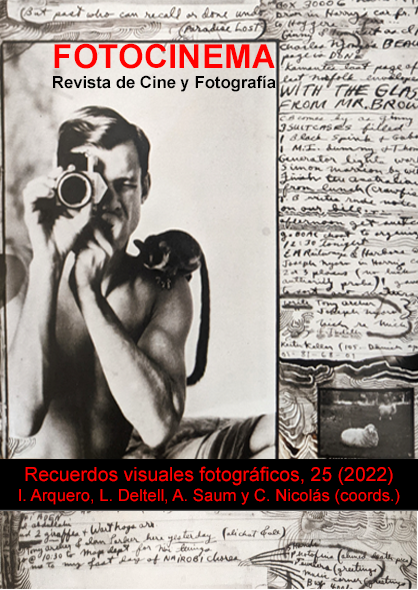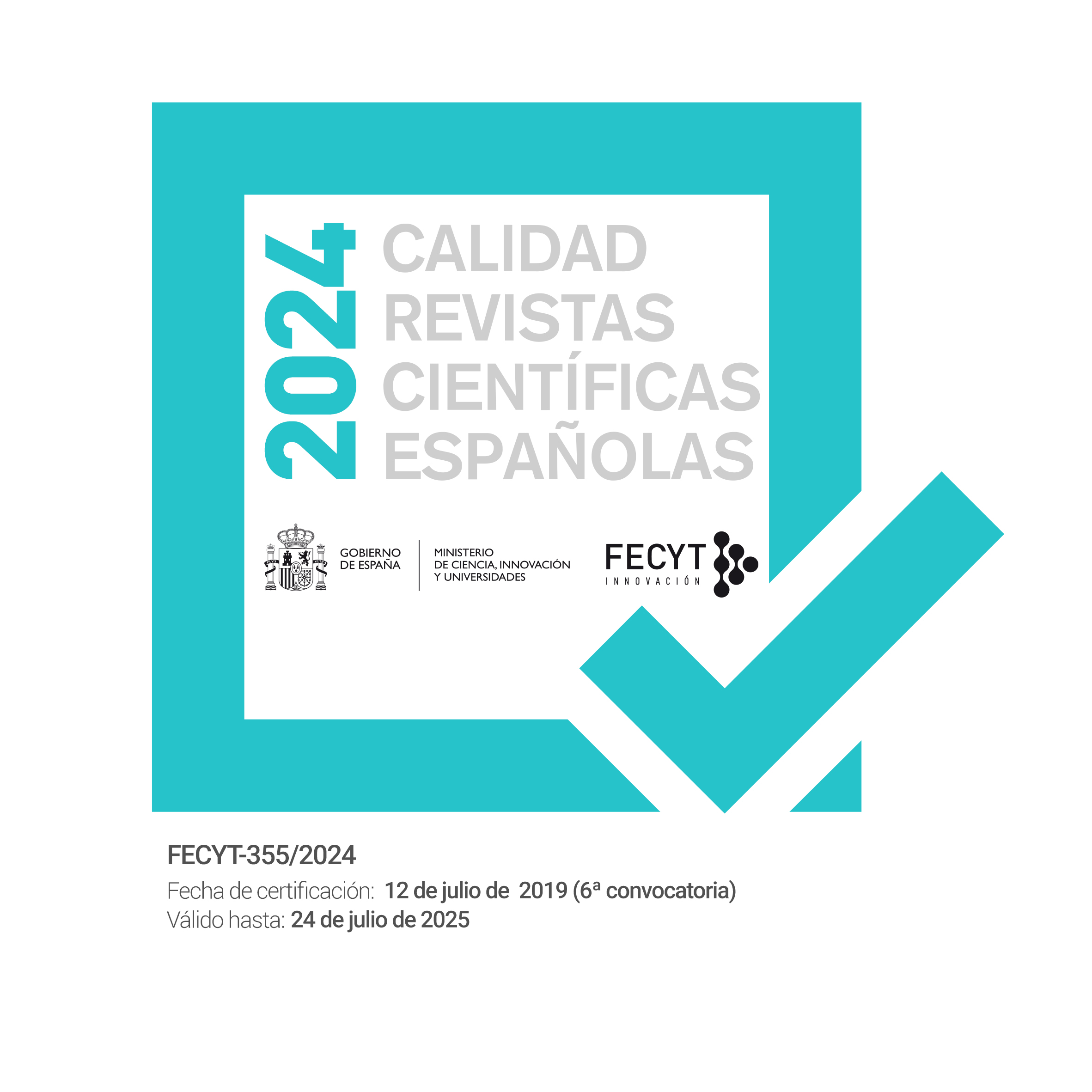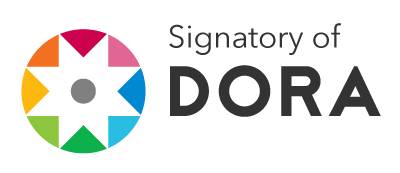Las obras de mayor relevancia en el estudio científico del Cine y Fotografía
enseñanza, impacto académico y análisis de co-citación
DOI:
https://doi.org/10.24310/Fotocinema.2022.vi25.14428Palabras clave:
Bibliometría, Comunicación Audiovisual, Open Syllabus, Web of ScienceResumen
La mayor parte de estudios bibliométricos utilizan bases de datos indexadas, como Web of Science o Scopus, para sus análisis. En este texto se propone el uso de textos no indexados como punto de partida para analizar cuáles son las obras más relevantes en el campo del Cine y la Fotografía. Se acude a Open Syllabus para obtener las obras más usadas en enseñanzas universitarias de este ámbito, las cuales se clasifican según su tipología sea ensayo, manual técnico, manual teórico o película. Las obras identificadas son consultadas en Web of Science para medir su impacto académico a través del número de citas. A continuación, se realiza un análisis de co-citación.
Los resultados indican que los manuales teóricos y prácticos tienen poca repercusión científica, mientras que los ensayos sí reciben citas en escritos científicos.
Descargas
Métricas
Publicación Facts
Perfil de revisores N/D
Información adicional autores
Indexado: {$indexList}
-
Indexado en
- Sociedad Académica/Grupo
- N/D
- Editora:
- Universidad de Málaga
Citas
BBarthes, R. (1980). Camera lucida: Reflections on photography. Hill and Wang.
Batagelj, V. (2008). Analysis of large networks with pajek. Networks, 94, 22-27.
Baudrillard, J. (1981). Simulacres et simulation. Galile?e.
Benjamin, W. (1985). Illuminations: Essays and reflections. Schocken.
Bolter, J. David & Grusin, Richard A. (1998). Remediation: Understanding new media.MIT Press.
Bordwell, D. & Thompson, K. (1979). Film art: An introduction. Addison-Wesley.
Bourdieu, P. (1989). Photography: A middle-brow art. Polity Press.
Braudy, L. (2016). Film theory and criticism: Introductory readings. Oxford University Press Inc.
Bruns, A. (2008). Blogs, wikipedia, second life, and beyond: From production to produsage. Peter Lang.
Butler, L., & Visser, M. S. (2006). Extending citation analysis to non-source items. Scientometrics, 66(2), 327-343. doi:10.1007/s11192-006-0024-1
Couldry, N. (2012). Media, society, world: Social theory and digital media practice. Polity Press.
Deleuze, G. (1983). Cine?ma 1: l'image-mouvement. Éd. de Minuit.
Deleuze, G. (1985). Cine?ma 2: l'image-temps. E?d. de Minuit.
Fairclough, N. (1995). Critical discourse analysis: The critical study of language. London; New York: Longman.
Foucault, M. (1977). Discipline and punish: The birth of the prison. London: Penguin Books.
Genette, G. (1979). Narrative discourse: Gerard genette. Oxford: Blackwell.
Hall, S. (1980). Culture, media, language: Working papers in cultural studies, 1972-79. London: Unwin Hyman.
Hall, S. (1997). Representation: Cultural representations and signifying practices. Milton keynes: The Open University.
Halliday, M. A. K. (1985). An introduction to functional grammar. Edward Arnold.
Jenkins, H. (2008). Convergence culture: Where old and new media collide. New York University Press.
Jewitt, C., & Kress, G. (2003). Multimodal literacy. Peter Lang.
Kress, G. (2007). Multimodality : A social semiotic approach to contemporary communication. Routledge.
Kress, G., & Van Leeuwen, T. (1995). Reading images : The grammar of visual design. Routledge.
Kress, G., & Van Leeuwen, T. (2001). Multimodal discourse : The modes and media of contemporary communication. Arnold.
Latour, B. (2005). Reassembling the social: An introduction to actor-network-theory. Oxford University Press.
Livingstone, S., & Lunt, P. (1993). Talk on television: Audience partecipation and public debate. Routledge.
London, B., & Stone, J. (2010). A short course in digital photography. Prentice Hall.
London, B., & Stone, J. (2019). A short course in photography. Pearson.
London, B., Stone, J., & Upton, J. (2017). Photography. Boston: Pearson.
Manovich, L. (2000). The language of new media. Cambridge: MIT Press.
McGowan, N.; Repiso, R. & Montero, J. (2022a). Documentos de Cine y Fotografía más citados en Open Syllabus, clasificados por tipo de documento y especialidad. Zenodo. https://doi.org/10.5281/zenodo.5897236
McGowan, N.; Repiso, R. & Montero, J. (2022b). Número de citas por autor, porcentaje y tipo de documento de los libros analizados en la categoría de Cine y Fotografía de Open Syllabus. Zenodo. https://doi.org/10.5281/zenodo.5897326
McGowan, N.; Repiso, R. & Montero, J. (2022c). Número de citas en WoS para los 100 primeros documentos de Cine y Fotografía en Open Syllabus. Zenodo. https://doi.org/10.5281/zenodo.5897359)
McLuhan, M. (1963). Understanding media; the extensions of man McGraw Hill.
Metz, C. (1974). Language and cinema. The Hague: Mouton.
Metz, C. (1977). Essais se?miotiques. Klincksieck.
Mitchell, W. J. T. (1980). The language of images. The University of Chicago Press.
Mitchell, W. J. T. (2010). Iconology : Image, text, ideology.
Mollison, M. (2020). Producing videos: A complete guide. Abingdon, Oxon; New York: Routledge, Taylor and Francis Group. Recuperado de https://www.taylorfrancis.com/books/e/9781003116844
Moreno-Delgado, A., Repiso, R., & Montero-Díaz, J. (2020). Analysis of networks of academic output on television programming. Icono14, 18(1), 123-154. doi:https://doi.org/10.7195/ri14.v18i1.1484
Mulvey, L. (1975). Visual pleasure and narrative cinema. Screen, 16(3), 6-18.
Mulvey, L. (1996). Fetishism and curiosity. BFI.
Mulvey, L. (2005). Death 24x a second : Stillness and the moving image. Reaktion.
Opensyllabus.org. (2021). About open syllabus. Recuperado de https://blog.opensyllabus.org/about-the-open-syllabus-project/
Repiso, R. & Montero, J. (2019). Edición impresa tradicional, digital, bajo demanda y auto-sufragada: cuatro modelos de edición de libros que requieren ser evaluados de manera diferente. Bibliotecas. Anales de investigación, 15(1), 5-9.
Repiso, R., Ahedo, J., & Montero, J. (2018). The presence of the encyclicals in web of science: A bibliometric approach. Scientometrics, 115(1), 487-500.
Sontag, S. (1973). On photography. Penguin Books.
Sternberg, M. (1971). Expositional modes and temporal ordering in fiction. Hebrew University.
Teixeira da Silva, J.A. (2021). How to shape academic freedom in the digital age? Are the retraactions of opinionated papers a prelude to “cancel culture” in academia? Current Research in Behavioral Sciences, 2. https://doi.org/10.1016/j.crbeha.2021.100035
Van Eck, N. J., & Waltman, L. (2010). Software survey: VOSviewer , a computer program for bibliometric mapping. Scientometrics, 84, 523-538.
Van Leeuwen, T., & Jewitt, C. (2001). Handbook of visual analysis. Sage.
Voice & vision A creative approach to narrative film and DV production. (2017). [Place of publication not identified]: Routledge.
Welles, O. (1941). Citizen Kane. RKO Radio Pictures.
Wells, L. (2015). Photography: A critical introduction. Routledge, Taylor and Francis Group.
Williams, L. (1999). Hard core : Power, pleasure, and the "frenzy of the visible". University of California Press.
Williams, L. (2008). Screening sex. Duke University Press.
Publicado
Cómo citar
Número
Sección
Licencia
Todos los contenidos publicados en Fotocinema. Revista científica de cine y fotografía están sujetos a la licencia Creative Commons Reconocimento-NoComercia-Compartirigual 4.0 cuyo texto completo puede consultar en <http://creativecommons.org/licenses/by-nc-sa/4.0>
Se pueden copiar, usar, difundir, transmitir y exponer públicamente, siempre que:
- Se cite la autoría y la fuente original de su publicación (revista, editorial y URL de la obra).
- No se usen para fines comerciales.
- Se mencione la existencia y especificaciones de esta licencia de uso.
Los derechos de autor son de dos clases: morales y patrimoniales. Los derechos morales son prerrogativas perpetuas, irrenunciables, intransferibles, inalienables, inembargables e imprescriptibles. De acuerdo con la legislación de derechos de autor, Fotocinema. Revista científica de cine y fotografía reconoce y respeta el derecho moral de los autores/as, así como la titularidad del derecho patrimonial, el cual será cedido a la Universidad de Málaga para su difusión en acceso abierto. Los derechos patrimoniales, se refieren a los beneficios que se obtienen por el uso o divulgación de las obras. Fotocinema. Revista científica de cine y fotografía se publica en open access y queda autorizada en exclusiva para realizar u autorizar por cualquier medio el uso, distribución, divulgación, reproducción, adaptación, traducción o transformación de la obra.
Es responsabilidad de los autores/as obtener los permisos necesarios de las imágenes que están sujetas a derechos de autor.














13.png)



